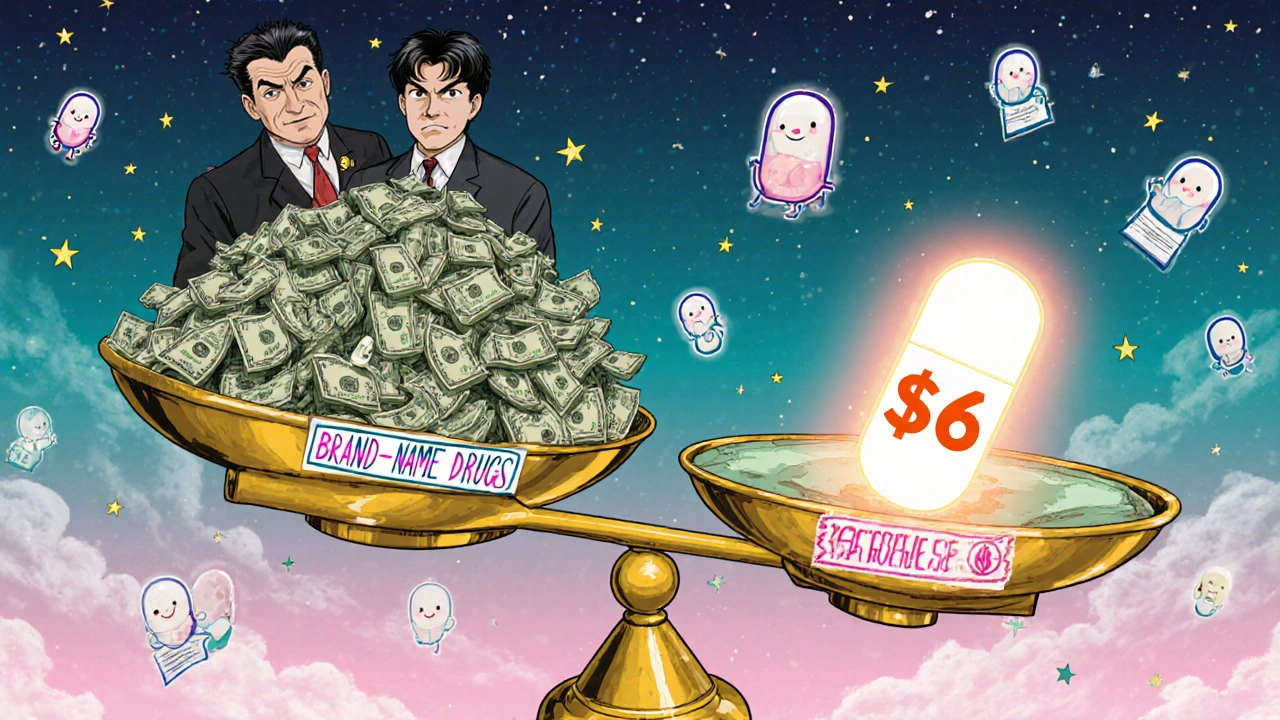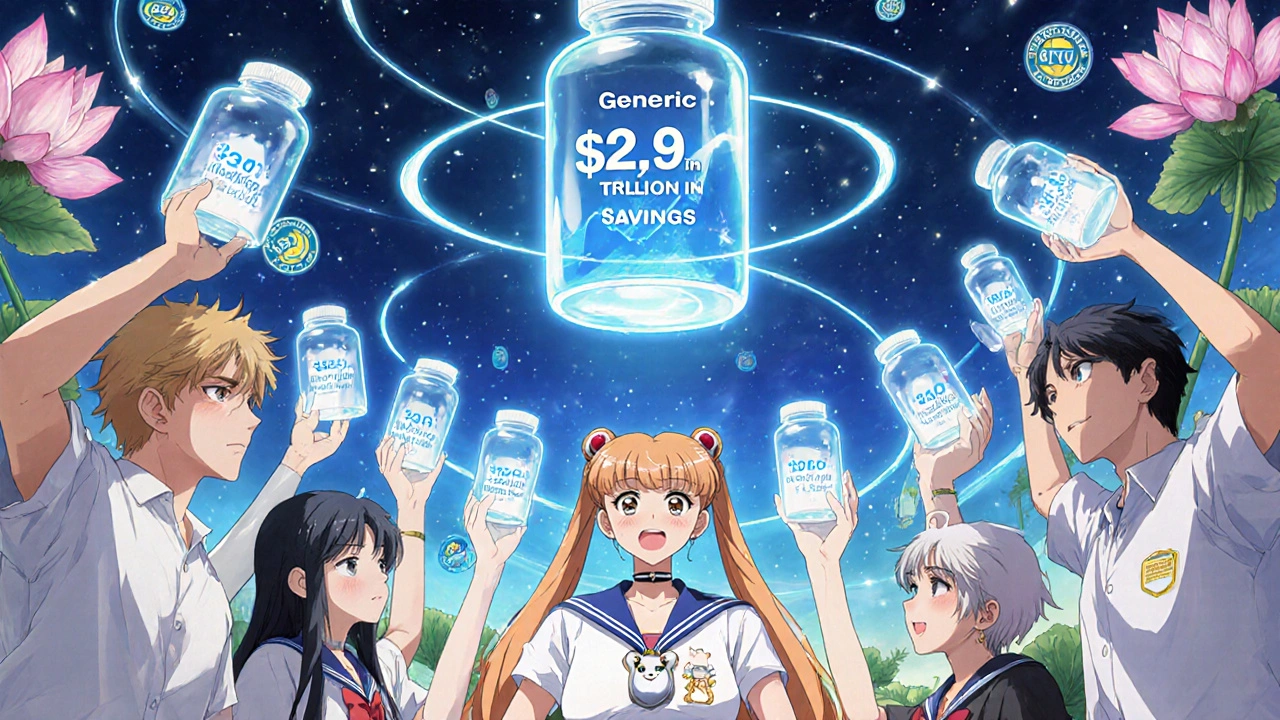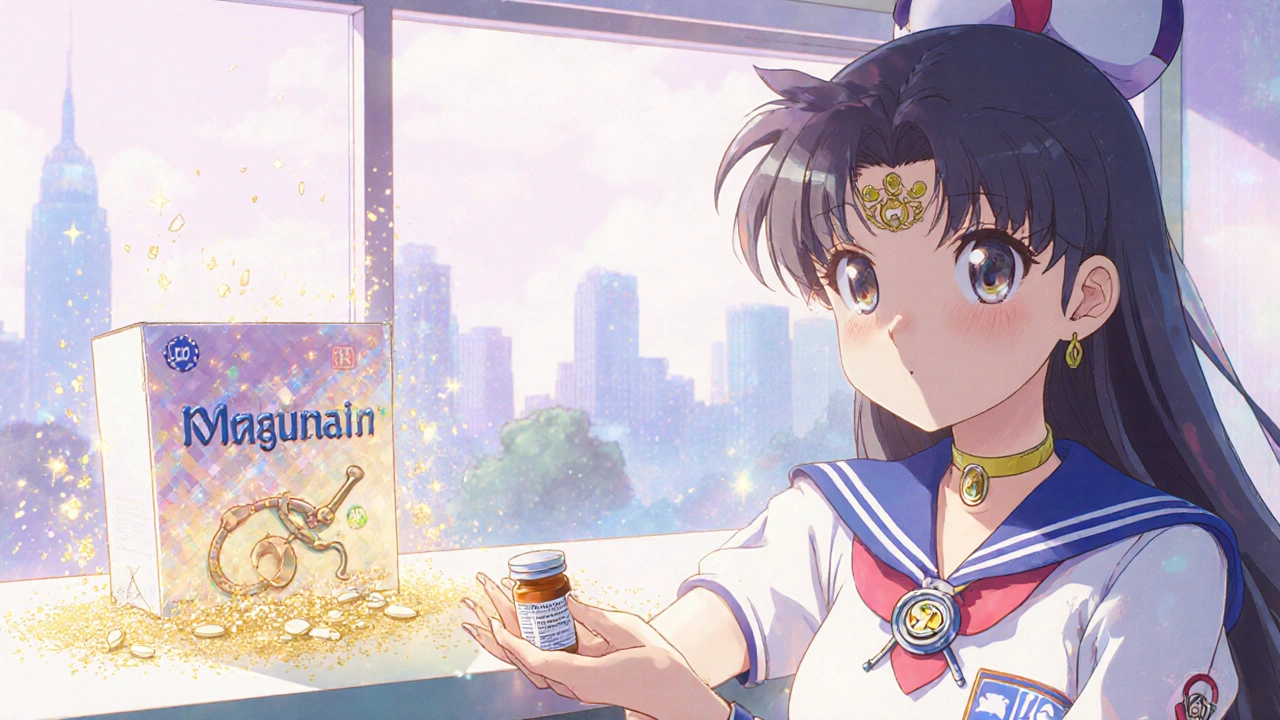Every year, Americans spend over $600 billion on prescription drugs. That’s more than any other country in the world. And yet, 90% of all prescriptions filled are for generic medications. Why? Because they work just as well-and cost a fraction of the price.
What Exactly Are Generic Medications?
Generic drugs are exact copies of brand-name medicines, made after the original patent expires. They contain the same active ingredient, in the same strength, and work the same way in your body. The FDA requires them to meet the same strict standards for safety, purity, and effectiveness as the brand-name version. That means if you take a generic version of lisinopril for high blood pressure, it’s not a "weaker" version-it’s the same drug, just without the marketing budget.Here’s the real difference: brand-name drugs cost hundreds of dollars because the company paid millions to develop them, run clinical trials, and advertise. Generics skip all that. They don’t need to repeat expensive studies. Instead, they prove they’re bioequivalent-meaning your body absorbs them at the same rate and to the same extent as the brand. The FDA says that’s enough. And the data backs it up.
How Much Money Do Generics Actually Save?
The numbers are staggering. In 2022 alone, generic and biosimilar drugs saved the U.S. healthcare system $408 billion. That’s more than the entire annual budget of the Department of Education. Over the past decade, they’ve saved a total of $2.9 trillion.At the pharmacy counter, the difference is even clearer. The average copay for a generic is $6.16. For a brand-name drug? $56.12. That’s more than nine times more. And 93% of generic prescriptions cost under $20. Only 59% of brand-name ones do.
Take sertraline, the generic for Zoloft. One patient on Reddit shared they paid $9 for the generic versus $450 for the brand. That’s not an outlier-it’s the norm. A 2022 study from Johns Hopkins found that switching from a high-cost generic to a cheaper alternative of the same drug class could save patients up to 95%. In Colorado, researchers found 45 drugs where the generic version was 15 times more expensive than another generic in the same category. Just switching to the cheaper one saved patients an average of $1,200 a year.
Why Do Brand-Name Drugs Still Cost So Much?
Even though generics make up 90% of prescriptions, they only account for about 1.5% of total drug spending. That means the 10% of prescriptions for brand-name drugs are responsible for nearly 85% of the money spent on prescriptions. Why? Because drug companies keep prices high-even after generics enter the market.Here’s how it works: when a brand-name drug’s patent expires, generic manufacturers can apply to sell it. The first generic to enter usually drops the price by 80-85%. As more companies join, prices keep falling. But many brand-name companies delay this by filing dozens of minor patents-sometimes over 17 per drug-to block generics. The FTC calls this "patent abuse." It’s legal, but it keeps prices high.
And it’s not just about patents. Some brand-name companies buy out generic makers to prevent competition. Others repackage their own drugs into new forms-like switching from a pill to a capsule-and sell them as "new" products at full price. These tactics aren’t rare. They’re standard.

Are Generics Always Safe? What About Side Effects?
Some patients worry that generics aren’t as reliable. They’ve heard stories-someone switched to a generic thyroid medication and felt off. Or their seizure control changed after switching to a generic antiepileptic drug.These cases exist, but they’re rare. The FDA approves over 800 generic drugs every year. Of those, 98% are rated "AB"-meaning they’re therapeutically equivalent. For most medications, switching is completely safe.
There are exceptions. Drugs with a narrow therapeutic index-like warfarin, levothyroxine, or phenytoin-require very precise dosing. Even small changes in how the body absorbs the drug can matter. That’s why some doctors prefer to stick with one brand for these. But even here, studies show that most patients do just fine on generics. The key is consistency: if you start on a generic, stay on it. Don’t keep switching between brands and generics.
One 2023 survey on Drugs.com found that only 15% of people reported issues with generic substitutions for thyroid or seizure meds. Most of those cases involved patients who switched back and forth between different generics. That’s the real problem-not the generic itself, but the inconsistency.
How to Make Sure You’re Getting the Best Deal
You don’t have to pay more just because your doctor wrote a brand name on the prescription. Here’s what you can do:- Ask your doctor: "Is there a generic version?" Most doctors know. If they say no, ask why.
- Check the pharmacy’s price list. Sometimes, the generic isn’t the cheapest option. Another generic in the same class might cost even less.
- Use GoodRx or SingleCare. These apps show cash prices at nearby pharmacies. Often, the cash price for a generic is lower than your insurance copay.
- Ask about therapeutic substitution. If your drug has multiple generics, your pharmacist can recommend the lowest-cost option that still works.
- Don’t assume your insurance covers the cheapest version. Some plans still push expensive brands unless you specifically request the generic.
One woman in Ohio saved $1,800 a year just by switching from a $50 brand-name statin to a $4 generic. She didn’t change anything else-just asked.

Why Aren’t More People Using Generics?
You’d think everyone would jump at the chance to save money. But many people still don’t. Why?Some think generics are "inferior." That’s a myth. Others don’t know they can ask. A Consumer Reports survey found that 78% of people who knew about generics requested them-but 22% didn’t even know it was an option.
Then there’s the system. Insurance plans often charge higher copays for generics if they’re not on the preferred list. Some pharmacies won’t automatically substitute unless the doctor writes "dispense as written." In New York, pharmacists can’t switch to a generic unless the doctor specifically allows it. In 32 states, you need extra paperwork to swap one generic for another.
And even when generics are cheap, they’re not always affordable. A 2022 Medicare survey found that 41% of seniors still struggled to pay for their meds-even though 91% of their prescriptions were generics. That’s because many plans have high deductibles, or the copay is still too high for fixed incomes.
What’s Next for Generic Medications?
The future looks promising. The FDA approved 831 generic drugs in 2022-the second-highest number ever. More competition means lower prices. The Inflation Reduction Act now caps Medicare Part D out-of-pocket costs at $2,000 a year, which will push even more people toward generics.Biosimilars-generic versions of complex biologic drugs like Humira-are also starting to enter the market. They’re not as cheap as regular generics yet, but they’re already saving billions. Experts predict they could save another $50 billion a year by 2025.
But the biggest opportunity? Therapeutic substitution. Instead of just swapping a brand for its generic, what if you swap a $100 generic for a $5 generic that works just as well? That’s where the next wave of savings is. One study showed that if just 10% of high-cost generics were replaced with cheaper alternatives, the system could save $15 billion a year.
It’s not about cutting corners. It’s about using what works-and paying less for it. Generics aren’t a compromise. They’re the smart choice.
Are generic medications as effective as brand-name drugs?
Yes. The FDA requires generic drugs to have the same active ingredient, strength, dosage form, and route of administration as the brand-name version. They must also prove bioequivalence-meaning they work the same way in your body. Studies show that 98% of generic drugs are rated "AB" by the FDA, meaning they’re therapeutically equivalent. For most people, generics are just as effective.
Why do some people say generics don’t work for them?
Rarely, patients report changes in how they feel after switching to a generic-especially with drugs that need very precise dosing, like thyroid or seizure medications. But in most cases, the issue isn’t the generic itself. It’s switching back and forth between different brands or generics. Consistency matters. If you switch, stick with the same version. Talk to your doctor or pharmacist if you notice changes.
Can pharmacists substitute generics automatically?
In 49 U.S. states, pharmacists can substitute a generic for a brand-name drug without asking the doctor-unless the prescription says "dispense as written." New York is the only exception, where the prescriber must specifically allow substitution. Even then, pharmacists can still suggest lower-cost generics if you ask.
Why are generics so much cheaper if they’re the same drug?
Brand-name companies spend hundreds of millions on research, clinical trials, and advertising. Generics don’t need to repeat those costs. They only need to prove they’re bioequivalent, which takes far less time and money. The savings come from cutting out marketing, avoiding patent lawsuits, and competing with other generic makers. The drug is the same-just without the brand markup.
Should I always choose the cheapest generic?
For most medications, yes. But for drugs with a narrow therapeutic index-like warfarin, levothyroxine, or some epilepsy meds-it’s best to stick with one version once you find one that works. Don’t keep switching between generics. If cost is an issue, ask your pharmacist if there’s another generic in the same class that’s cheaper but still safe.
How can I find out if a cheaper generic alternative exists?
Ask your pharmacist. They have access to tools like the FDA’s Orange Book and drug pricing databases. You can also use apps like GoodRx or SingleCare to compare cash prices. Sometimes, the cheapest option isn’t the one your doctor prescribed-it’s another generic in the same drug class. For example, a $10 generic for acid reflux might be replaced with a $2 version that works just as well.

Jeremy Hernandez
November 18, 2025 AT 02:25Bro the FDA is just a puppet for Big Pharma. Generics? Nah. They’re all cut-rate junk made in some basement lab in China. I know a guy who took a generic statin and his liver went haywire. They don’t test these things like the real drugs. It’s all about profit, not your health.
Tarryne Rolle
November 19, 2025 AT 01:59It’s not about the drug-it’s about the system that makes you believe you need to choose between ‘cheap’ and ‘safe.’ We’ve been conditioned to equate price with quality, when really, the only thing being sold here is fear. The real tragedy isn’t the cost of medicine-it’s the surrender of our trust in science.
Kyle Swatt
November 19, 2025 AT 18:59Look, I used to think generics were for losers until my kid needed seizure meds. We switched from brand to generic and saved $400 a month. No side effects, no drama. The truth? The system is rigged to make you feel guilty for saving money. But here’s the thing-your life doesn’t get cheaper because you’re ‘sticking with the brand.’ Your life gets better when you’re not broke. Generics ain’t a compromise. They’re rebellion.
Deb McLachlin
November 21, 2025 AT 06:08While the data presented is compelling, I would urge caution regarding the generalization that all generics are interchangeable. The bioequivalence standards, while rigorous, do not account for individual pharmacokinetic variations. In clinical practice, consistency in formulation remains paramount, particularly in chronic conditions requiring precise titration. Further research into patient-reported outcomes across generic manufacturers is warranted.
saurabh lamba
November 22, 2025 AT 22:35USA people so dumb. Why pay 500$ for pill when 5$ same thing? Even in India we know this. Pharma companies cheat. They make you think you need fancy brand. Sad.
Kiran Mandavkar
November 23, 2025 AT 08:29Oh wow, another ‘generic is fine’ lecture from the proletariat. You think the FDA gives a damn about you? They’re just rubber-stamping imports from countries where quality control is a joke. You’re not saving money-you’re gambling with your life. And don’t even get me started on how the government enables this fraud.
Eric Healy
November 23, 2025 AT 12:47My doc gave me a brand name but I asked for generic and saved like 80% and I’m fine. Some people just wanna pay more cause they think its better. dumb. also the FDA is legit
Shannon Hale
November 24, 2025 AT 10:46Y’ALL ARE IGNORING THE REAL CRIME HERE. BIG PHARMA ISN’T JUST MAKING MONEY-THEY’RE STAGING A COUP ON YOUR HEALTHCARE. THEY BUY OUT GENERIC COMPANIES, FILE FAKE PATENTS, AND THEN SELL YOU THE SAME PILLS FOR $500 WHILE YOU’RE SCROLLING ON YOUR PHONE THINKING YOU’RE SMART FOR USING COUPONS. THIS ISN’T CAPITALISM. THIS IS FEUDALISM WITH A PHARMACY COUNTER.
Holli Yancey
November 25, 2025 AT 05:56I’ve been on the same generic for years. I used to worry about switching, but after talking to my pharmacist and sticking with one brand, I’ve had zero issues. It’s not about the name on the bottle-it’s about consistency and asking questions. No need to panic. Just be informed.
Gordon Mcdonough
November 25, 2025 AT 08:40THIS IS WHY AMERICA IS BROKE!! PEOPLE ARE TOO LAZY TO STAND UP FOR REAL MEDICINE!! THEY’LL TAKE A 5-DOLLAR PILLS MADE IN A CHINA FACTORY WHILE THEIR KIDS GO WITHOUT!! I’VE SEEN IT-MY BROTHER GOT A GENERIC FOR HIS HEART MED AND HE HAD A TERRIBLE REACTION!! THE GOVERNMENT LETS THIS HAPPEN BECAUSE THEY’RE ALL CORRUPT!!